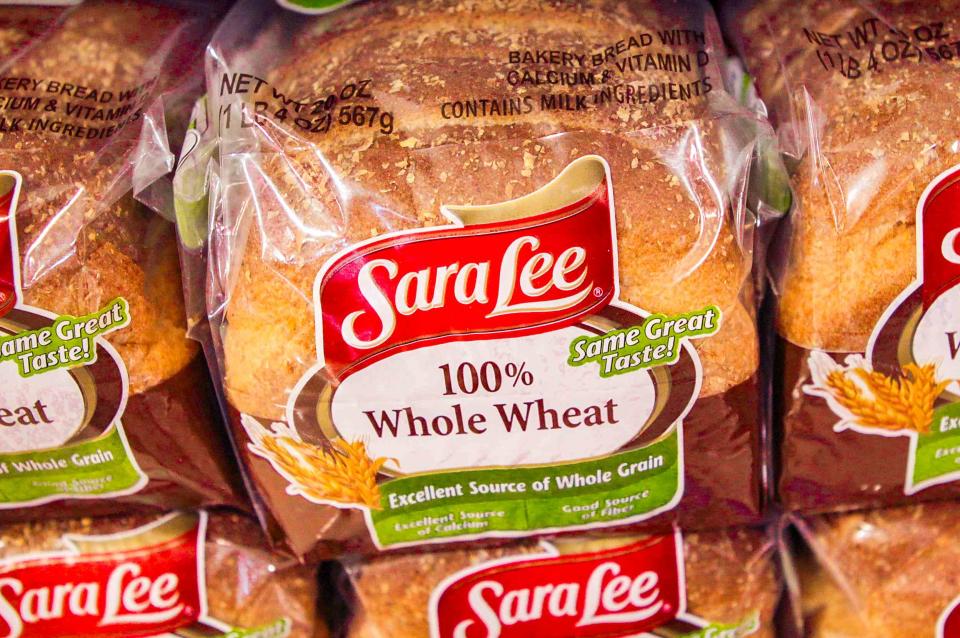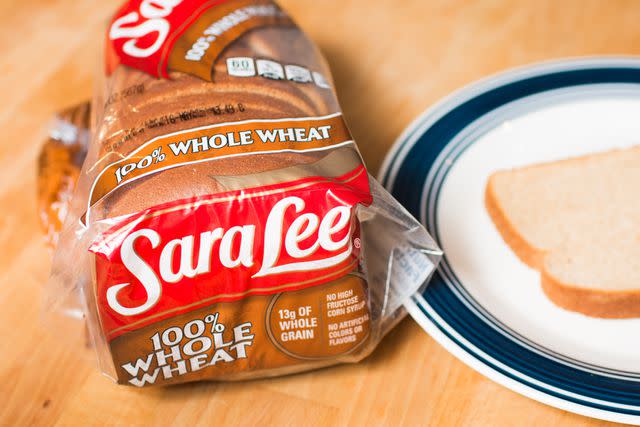The Only Way You Should Store Bread, According to Sara Lee
Is it OK to keep it on your kitchen counter or in the pantry, or should you pop it into the fridge?

Simply Recipes / Getty Images
Growing up, my family kept our sandwich bread on the bottom shelf of the fridge—something I continue doing into my adult life. Is this a habit I should break or is it the best way to store sliced bread so that it lasts longer?
To get some answers, I chatted with Kathleen Robbins, Vice President of Research & Development at Bimbo Bakeries USA, the umbrella company that owns fan-favorite bread brands like Sara Lee, Oroweat, and Nature’s Harvest.
What Is the Best Way To Store Sliced Bread?
According to Robbins, “sliced bread should be stored at room temperature if consumers plan to eat it within the declared shelf life.” Which immediately proves my family's sliced bread storage methods wrong!
“Store the loaf in a cool, dry place like a pantry,” she adds, “and be sure to close the bag tightly to prevent air from getting in.” The airtightness will keep moisture out and also keep the bread from going stale.
“There can be slight differences in storage between various kinds of sliced bread,” says Robbins. Bread's moisture content differs depending on what kind of flour is used. “Whole grain bread, with its higher moisture content, may have a shorter shelf life at room temperature compared to white bread,” explains Robbins. “White bread typically lasts longer due to its lower moisture content and benefits from following proper storage guidelines.”

Simply Recipes / Getty Images
The Telltale Signs That Your Bread Has Gone Bad
The most obvious sign that it's time to toss your bread is if you see any visible mold. “Mold may appear as fuzzy patches in various colors throughout the loaf,” explains Robbins.
Even if the mold is only on one slice of the loaf, discard the entire loaf. “Mold spores can travel and contaminate other parts of the bread even if you cannot see them.”
Furthermore, if you detect any pungent odors or if your loaf is excessively hard, it's time to throw it out. If it's stale but not rock hard, don't toss it because “slightly stale bread can be used for toast or croutons,” suggests Robbins.
Read More: Is It Safe To Eat Bread That’s Just a Little Moldy? Here’s What the Experts Say
Tips for Extending the Life of Your Loaf of Bread
“Freezing sliced bread is the most effective way to save the product without losing the quality,” says Robbins, with the caveat that it must be stored in an airtight container to keep it safe from freezer burn.
Robbins suggests a three-month freezer life for bread. She recommends wrapping the bread tightly with “double layers (a second bag) of protection to prevent freezer burn.”
When it comes to defrosting, you can pop the bread in the fridge overnight to safely defrost it or “place the loaf on a cooling rack to ensure good airflow and eliminate condensation.” If your loaf is pre-sliced, peel off a single slice and stick it directly in the toaster. Robbins adds that there is no difference in the freeze-ability or defrosting practices between different kinds of sliced bread.
Read the original article on Simply Recipes.


